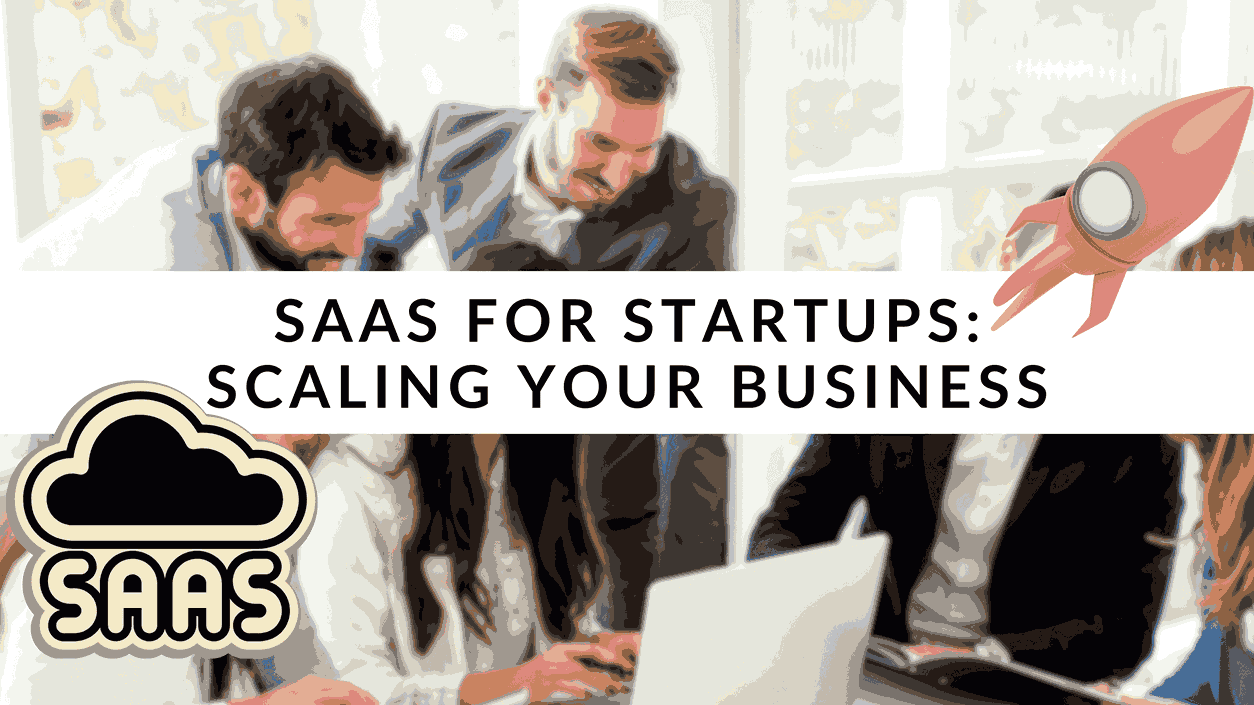SaaS for Startups: Scaling Your Business
-


SaaS for Startups: Scaling Your Business – A Comprehensive Guide
If you’re wondering how to scale your SaaS business, you’re not alone. Scaling involves a multi-faceted approach and a clear strategy to ensure success. In this guide, we’ll break down the key components of SaaS product scaling, providing insights and tips to help your startup flourish.
The Five Stages of Scaling a SaaS Startup
Scaling a SaaS business typically involves five major processes: building a strong team, software development, product design, marketing, and onboarding. Let’s delve into each of these stages:
1. The Software Stage: Proper Planning
The software development phase is where the heart of your SaaS product lies. Proper planning is critical. You need to have a clear vision of your target audience, their pain points, and how your product addresses those needs. Remember that the more time you invest in understanding your audience, the less time you’ll spend coding. Software development drives changes to the user experience and, therefore, is the foundation of scaling your product.
2. The Design Part: Crafting User Experience
Design and user experience (UX) are paramount, starting before development and continuing alongside it. Design begins with research and user experience design. It involves preparing UI mockups and refining user flow. An intuitive user flow is essential to prevent losing customers to your competitors.
3. The Marketing Part: Building a Loyal Customer Base
Your marketing strategy should function as a funnel, which includes onboarding, retaining customers, and expanding your network. Key metrics at this stage are lead flow, conversion, and deal size. Without effective marketing, your product might not find its audience. Successful marketing campaigns and a well-designed product go hand-in-hand in building brand recognition.
4. Building a Project Team
Building a strong team is crucial. A product manager with experience in SaaS products should be the first hire. This expert envisions the necessary product features. A project manager follows to turn these specifications into a functioning product. Additionally, you’ll need designers, developers, and quality assurance professionals. Due to the global talent shortage, many companies opt to expand their teams with outsourced or outstaffed experts.
5. The Onboarding Part: Educating Your Customers
Clear communication and education are essential for creating a loyal user network. Successful onboarding includes three critical aspects: homepage design, smooth onboarding, and core value experience. Your homepage should clearly convey what your software does and how it does it. It should also include a compelling call to action. User onboarding should involve a logical sequence of actions, possibly with tutorials and progress indicators. This creates a smooth onboarding experience, reducing the need for customer support and lowering the customer churn rate.
Sales Strategy: The Funnel Scheme
Your sales strategy follows a funnel scheme comprising five main steps: lead generation, prospect qualification, pitch, presentation, demo, and follow-up. Lead generation is the initial step, and prospect qualification involves determining if the prospect is a good fit. The pitch, presentation, and demo stages focus on demonstrating the value your product provides. Follow-up is crucial in situations where the sale does not progress as planned.
Many Ways to Scale Your SaaS Business
You can employ different strategies to scale your SaaS business, such as organic growth, investment, and expanding to new markets. Organic growth is business growth without external funding. Investment can involve marketing, product development, or a sales team. To expand into new markets, localization is crucial. You must tailor your product to meet the needs of a different market.
Challenges in Scaling Your SaaS Product
Scaling your SaaS product comes with its set of challenges:
- Not Monitoring the Conversion Rate: When you scale and increase your marketing budget, the conversion rate should increase proportionally. Failure to monitor this can result in setbacks.
- Focusing Only on the Main Feature: Over-reliance on a single feature can make your product vulnerable to competition. Diversify your offering to address new user pain points.
- Onboarding Issues: Inadequate onboarding may lead to low subscription conversions. Offering quality tutorials and improving the user experience is critical.
A Step-by-Step Guide to Scaling Your SaaS Business
- Project Audit: Assess the viability of your product and its current growth strategy.
- Market Analysis and Opportunities: Understand market needs and competition.
- Goal Setting: Define your business goals for scaling.
- Choosing a Scaling Strategy: Decide whether to restyle, invest, or expand into new markets.
- Creating a Budget and Project Plan: Determine the budget and plan your project.
- Design and Software Changes: Redesign and improve your product.
- Testing: Perfect your product through focus groups, usability testing, and research.
- Changes in Marketing: Adapt your marketing strategy to showcase user confidence.
- Changes in Sales Strategy: Optimize pricing, sales teams, and distribution channels.
- Launching: Roll out your product with new features.
How Much Does Design and Software Change Cost?
The cost of design and software changes varies by region and factors like the seniority of professionals, workload, and project complexity. Eastern Europe offers an optimal price-quality ratio, while Asia tends to have lower prices but potentially lower quality.
Avoiding Common Scaling Mistakes
Several common pitfalls can hamper your scaling efforts:
- Inadequate market research
- Weak design and user experience
- Ignoring user needs
- Poor marketing and sales strategies
In conclusion, scaling a SaaS business is a multifaceted journey that requires planning, competent teams, and a commitment to ongoing improvement. By understanding the key stages, addressing common challenges, and following a strategic roadmap, your startup can flourish in the competitive SaaS landscape. Remember, scaling is an ongoing process that evolves with your business, and it’s best approached with a reliable team and a well-thought-out plan. If you have any questions or need assistance, Northell is here to help you navigate this exciting journey.
Subscribed.FYI offers a valuable resource for startups looking to scale their business with the right SaaS tools. With a centralized platform providing comprehensive information about various SaaS tools, Subscribed.FYI makes it easier for users to compare, evaluate, and select the best options for their specific requirements. Additionally, the platform offers free member-only deals on 100+ SaaS tools, allowing startups to unlock savings and manage all their subscriptions in one place. This can be a game-changer for startups looking to streamline their SaaS stack and make informed decisions about the tools they use to grow their business.
For startups seeking to scale their business, Subscribed.FYI Deals provides the opportunity to unlock secret deals and save big on essential SaaS tools. By signing up for free, startups can access exclusive savings on a wide range of SaaS tools, ultimately helping them to manage expenses and make the most of their resources. With the ultimate subscription management solution, startups can effortlessly track expenses, monitor, cancel, and renegotiate all their subscriptions in one place, enabling them to take control of their expenses like never before. Overall, Subscribed.FYI is a valuable resource for startups looking to navigate the complexities of SaaS tools and expenses, ultimately empowering them to make informed decisions and scale their business effectively.
Relevant Links:
- Gartner – SaaS Growth Strategy
- Coupler – How to Scale a SaaS Business
- SaaS Academy – Strategies to Scale Your SaaS Business
- Northell Design – How to Scale a SaaS Product Case Studies
- Subscribed.FYI
- Subscribed.FYI Deals





